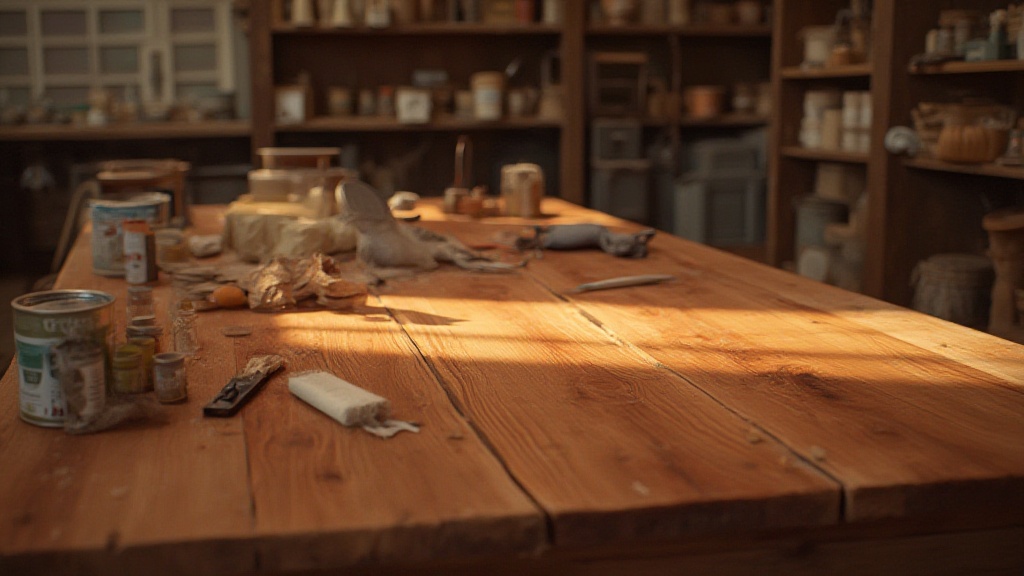Transforming oak wood furniture is a fulfilling journey that enriches both your space and creative spirit. The refinishing process provides a unique chance to restore the beauty of cherished pieces, allowing the stunning wood grain to shine through.
With the right techniques and tools, achieving a professional-grade finish is well within your reach.
Gather your supplies and prepare for a rewarding DIY project that highlights the natural beauty of your furniture while extending its lifespan.
Click here to learn more about: oak furniture
Preparing Oak Furniture For Refinishing
Preparation is key to a successful refinishing experience.
Removing old finishes lays the groundwork for fresh coatings to adhere effectively, enhancing the final aesthetic. This essential step eliminates residue that could compromise the outcome of your project.
Next, gather your refinishing tools. Essential items include medium-grit sandpaper, brushes, and necessary safety gear to protect yourself during the process.
Fine-grit sandpaper will be invaluable for achieving a sleek finish, providing the perfect texture for subsequent treatments.
Consider testing a small area first; this allows you to gauge how the oak responds to various stains and treatments.
Utilizing techniques such as staining and glazing will enhance the character of the wood while ensuring a beautiful transformation.
Each method will contribute to the overall charm, whether you desire a distressed look or a more polished finish that showcases the patina of your oak furniture.
Embracing artistic applications such as color washing or antique finishes adds layers of depth, enriching your furniture with a timeless quality.
What Are Distressing Techniques
Aged weathered finishes evoke a sense of time-worn charm and character. Distressing techniques simulate natural aging, creating an authentic, time-worn look on various surfaces.
Common methods include:.
- Sanding: This method selectively removes surface layers, imparting an authentic worn appearance that enhances wood character.
- Scraping: Craftsmen chip away material using a tool to achieve a rugged texture that adds depth.
- Using Tools: Techniques such as brushing, hammering, or applying heat introduce varied effects, enhancing the wood’s surface and creating unique patterns.
These techniques enhance personality without compromising wood’s integrity. Weathered oak is an excellent example, pairing beautifully with rustic decor, while an antique white wash adds vintage charm to farmhouse styles, enriching the overall aesthetic.
The Importance Of Sanding Properly
Effective sanding techniques play a pivotal role in achieving a smooth finish on wood surfaces. Proper sanding prepares surfaces for staining or sealing, ensuring longevity and appeal. Different grits of sandpaper serve unique purposes in the sanding process:
- Coarse Grit (40-60): Ideal for shaping and removing old finishes effectively.
- Medium Grit (80-120): Necessary for smoothing surfaces after initial sanding, creating a base for additional treatments.
- Fine Grit (150-220): Provides a final touch-up for an ultra-smooth appearance that enhances the overall finish.
When sanding, always do so in the direction of the wood grain to avoid unsightly scratches and maintain a uniform finish. Proper sanding not only enhances aesthetics but also sets the stage for successful finishes and artistic applications.
Distressing Techniques and Sanding
- Distressing techniques can increase the perceived value of furniture by adding character and uniqueness.
- Proper sanding can reduce the amount of stain or finish needed, leading to cost savings in materials.
- Using the correct grit of sandpaper can significantly improve adhesion for paints and finishes, ensuring a longer-lasting result.
- Wood surfaces that are sanded correctly are more resistant to wear and damage over time, enhancing durability.
Choosing The Right Stains For Oak
When it comes to selecting the perfect stains for oak, the natural color of the wood plays a significant role in your choice. Oak’s warm undertones, which range from yellow to beige, profoundly influence the final stain selection.
Light oak often benefits from subtle stains that enhance its brightness, while dark oak requires deeper hues to highlight its richness.
To ensure color accuracy, testing stains on scrap wood is essential; this allows you to see how different lighting impacts the stain’s appearance.
Testing is key to achieving the desired look.
Complementary Stains for Oak
Several popular stains complement oak’s beauty, including walnut, which adds depth, and mahogany, providing a stunning contrast without overshadowing the wood grain.
These stains can enhance the oak’s natural character beautifully. Consider experimenting with various techniques, such as distressing or color washing, to achieve a unique aesthetic.
Aged Weathered Finishes
Aged weathered finishes evoke a sense of time-worn charm and character, often seen in rustic decor and vintage aesthetics.
These techniques enhance surfaces to mimic the natural aging process, lending authenticity to furniture and walls. Commonly used in home decor, furniture restoration, and artistic applications, these methods achieve a rustic charm that resonates with many styles.
The right finish can transform oak into a stunning centerpiece.
Techniques to consider include distressing, layering, and color washing.
Each process can create varying levels of aging, making it suitable for both DIY projects and professional craftsmanship alike.
Working with eco-friendly products during restoration can also ensure sustainable design choices.
As you explore your options, remember that applying aged finishes can significantly enhance the texture and patina of your oak pieces.
With the right techniques and a keen eye for details, you can achieve a charming, vintage look that brings out the best in oak furniture.
Staining Oak
- Natural wood color impacts stain selection significantly, with oak’s warm undertones influencing the final choice.
- Testing stains on scrap wood is crucial for color accuracy and understanding how different lighting affects the appearance.
- Aged weathered finishes can enhance the rustic charm of oak, making it suitable for various decor styles.
- Using eco-friendly products during restoration promotes sustainable design choices while achieving the desired aesthetic.


